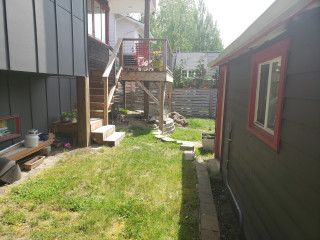
This article was originally published by a www.houzz.com . Read the Original article here. .

This article was originally published by a www.houzz.com . Read the Original article here. .

Establishing a meadow garden takes forethought, some physical effort and a bit of trial and error. However, these lovely grassy areas can establish themselves quickly and take on a life of their own. Check out the three meadow gardens below, in three very different locales — a small urban garden in Toronto, a yard in Illinois that was once prairie and a property in eastern Massachusetts designed according to permaculture principles. We’ve included plant lists to help inspire your own pollinator-attracting meadow garden.
This article was originally published by a www.houzz.com . Read the Original article here. .
The food forest also has citrus, apricot, apple, plum, fig and persimmon trees. In addition to attracting pollinators, improving the soil quality was also important. Lyon added soil-improving species to keep the soil rich. These include a California coffeeberry (Rhamnus californica, zones 7 to 10), Catalina currants (Ribes viburnifolium, zone 8), California lilac (Ceanothus sp.), sticky monkeyflower (Mimulus aurantiacus, zones 7 to 10) and alpine strawberry plants (Fragaria vesca, zones 5 to 9).
Learn more about this landscape